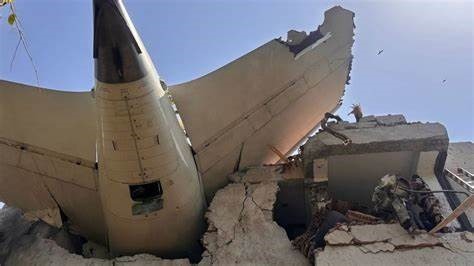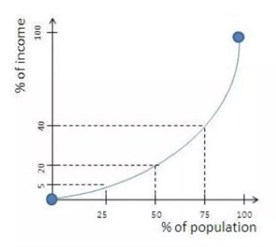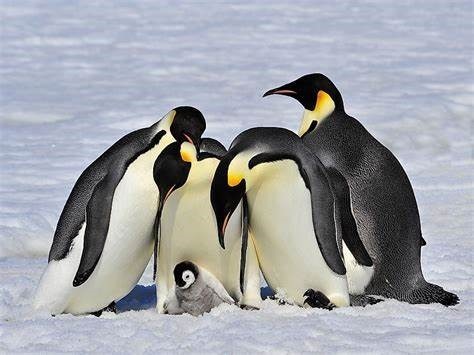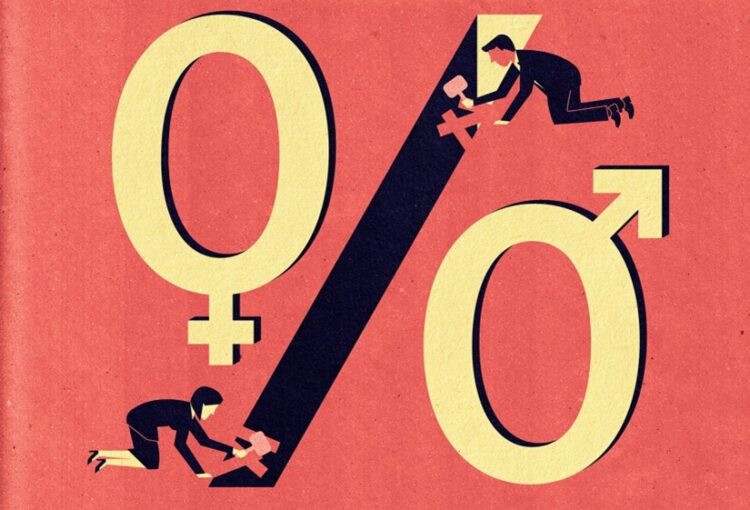Air India Plane Crash in Ahmedabad
Syllabus: GS3/Disaster Management
The Incident
- A Boeing 787 Dreamliner operated by Air India crashed into a college hostel in Ahmedabad, resulting in over 200 casualties.
- The Aircraft Accident Investigation Bureau (AAIB) has launched a formal investigation.
- Black boxes recovered (CVR & FDR) will be critical in determining the cause of the crash.
India’s Aviation Sector: Rising Amid Challenges
- Growth Indicators
- Domestic Passenger Traffic (FY 2023–24): 152 million passengers, 21% YoY growth.
- Air Cargo: 3.33 million tonnes handled; 6th-largest globally.
- Airport Expansion: Over 150 operational airports, 75 added under UDAN scheme.
- Employment Impact: Supports over 4 million jobs.
Aircraft Accident Investigation Bureau (AAIB)
- Established: 2012 under the Ministry of Civil Aviation.
- Mandate: Investigate civil aircraft accidents per ICAO Annex 13.
- Legal Framework: Governed by the Aircraft (Investigation of Accidents and Incidents) Rules, 2017.

Black Box: Critical for Crash Analysis
- Components:
- Cockpit Voice Recorder (CVR): Records pilot interactions, alarms, and audio cues.
- Flight Data Recorder (FDR): Logs altitude, speed, pitch, acceleration, etc.
- Crash Survivability:
- Material: Titanium or stainless steel
- Impact: 3,400 g-force resistance
- Fire: 1,100°C for 60 mins
- Depth: 6,000 meters underwater
Challenges in Indian Aviation
- Market Dynamics
- Duopoly: IndiGo (~60%) and Tata Group (~30%) dominate ~90% of the domestic market.
- Barriers to Entry: High costs, pricing practices, opaque slot allocation.
- Financial Stress: Chronic losses across airlines; Air India posted a ₹9,556 crore loss (FY22).
- Safety Concerns: Regulatory fines for IndiGo, Akasa Air, and Air India due to safety lapses.
Anti-Competitive Practices
- Gun-jumping, collusive pricing, and slot misuse are inadequately regulated.
- Institutional Weaknesses
DGCA, AAIB, BCAS face:
- Staff shortages
- Limited technical expertise
- Slow decision-making
- Leadership by non-aviation experts
Way Forward
- To transform from a high-growth market to a globally competitive aviation ecosystem, India must:
- Strengthen financial resilience
- Improve safety oversight
- Foster competitive neutrality
- Enhance regulatory capacity and expertise
International Civil Aviation Organisation (ICAO)
- Role: UN agency guiding international air navigation standards.
- Founded: April 4, 1947, via the Chicago Convention (1944).
- Members: 193 countries (India included)
- HQ: Montreal, Canada
- Air Navigation Commission (ANC): Technical advisory body with 19 commissioners.
With reference to the Aircraft Accident Investigation Bureau (AAIB), consider the following statements:
- It functions under the Directorate General of Civil Aviation (DGCA).
- It was established as a statutory body under the Aircraft (Investigation of Accidents and Incidents) Rules, 2017.
- It investigates both civil and military aircraft accidents.
Which of the above statements is/are correct?
A. 1 and 2 only
B. 2 only
C. 1 and 3 only
D. None
Correct Answer: B. 2 only
Detailed Explanation:
- Statement 1: “It functions under the Directorate General of Civil Aviation (DGCA).”
This statement is incorrect. - The Aircraft Accident Investigation Bureau (AAIB) is an independent body that functions under the Ministry of Civil Aviation.
- It is not a part of the DGCA.The DGCA is India’s civil aviation regulator, primarily responsible for safety oversight, airworthiness, licensing, and enforcing civil aviation rules.
- However, accident investigations are conducted by AAIB to ensure objectivity and impartiality.
- This separation of functions is in line with the International Civil Aviation Organisation (ICAO) guidelines, which recommend that accident investigation be kept independent from regulatory and operational bodies.
- Statement 2: “It was established as a statutory body under the Aircraft (Investigation of Accidents and Incidents) Rules, 2017.”This statement is correct.
- The AAIB was established in 2012, but its legal framework and authority were reinforced under the Aircraft (Investigation of Accidents and Incidents) Rules, 2017.
These rules were framed under the Aircraft Act, 1934, and are aligned with Annex 13 of the ICAO Convention, which sets global standards for aircraft accident investigations.
Although not created by a separate act of Parliament, the AAIB operates with statutory authority granted through these delegated rules, making it a statutory body in functional terms. - Statement 3: “It investigates both civil and military aircraft accidents.”
This statement is incorrect. The jurisdiction of the AAIB is limited to civil aviation. - Military aircraft accidents are investigated by separate authorities under the Ministry of Defence.
- This ensures that matters of national security and military confidentiality are handled within the defence establishment.
India’s Growth Paradox
Syllabus: GS3/ Economy
- India’s Growth Paradox: Rising GDP, Deepening Inequality – A Rewritten Summary
Context:
- India has emerged as the world’s fourth-largest economy with a nominal GDP of $3.9 trillion. However, this growth masks serious concerns about inclusivity and equitable distribution of wealth.
The Illusion of Growth
- GDP vs Per Capita Income: Despite robust GDP expansion, India’s per capita income remains low at around $2,800 (₹2.33 lakh/year), well below Vietnam ($4,300) and China ($12,500).
- Wealth Concentration:
- The top 1% of Indians control over 40% of the country’s wealth.
- The top 5% own 62% of total wealth.
- Excluding this elite group, the average income for the rest of the population falls to just ₹5,600 per month — near subsistence levels.
- International Rankings:
- India ranks 111 out of 125 on the Global Hunger Index.
- It is placed 134th on the Human Development Index (HDI), lagging behind countries like Vietnam and Sri Lanka.
- Poverty and Hunger:
- Over 800 million people depend on free rations through the National Food Security Act (NFSA).
- Around 230 million Indians live in multidimensional poverty.
- 35% of children are stunted, pointing to chronic undernutrition.
- Distortions in Growth Measurement
- Exchange Rate Effect: India’s GDP in USD terms is subject to fluctuations in the exchange rate. A weakening rupee can reduce GDP in dollar terms even if domestic output remains unchanged.

Employment Challenges
- Low Female Labour Force Participation Rate: Among the lowest globally.
- High Youth Unemployment: Particularly acute among educated youth, reflecting a mismatch between qualifications and job market needs.
- Drivers of Wealth Inequality
- Historical Injustices: Colonial and feudal legacies created entrenched economic disparities.
- Liberalization and Capital Concentration: Since the 1990s, reforms have disproportionately benefited capital-rich individuals and sectors.
- Urban-Rural Divide: Urban areas attract more capital and job opportunities, leading to geographic wealth concentration.
- Educational Disparities: Limited access to quality education among marginalized groups perpetuates inequality.
Policy Recommendations
- Broaden Development Metrics: Shift from GDP-centric assessments to include Human Development Indicators (HDI), nutrition, education, and gender equity.
- Promote Inclusive Employment: Prioritize labour-intensive sectors like MSMEs, rural industries, and the care economy.
- Decentralized Governance: Strengthen grassroots planning via panchayats, cooperatives, and community institutions.
- Sustainable Development: Integrate environmental protection and climate resilience into economic planning.
Gini Index – A Measure of Inequality
- The Gini index quantifies income inequality within a population.
- A higher value signifies greater inequality, with a larger share of income held by a small percentage of individuals.
- The global Gini index has risen steadily over centuries and worsened during the COVID-19 pandemic.
- Let me know if you’d like this converted into UPSC-style questions or infographic format.
With reference to India’s economic performance, consider the following statements:
- India is the fourth-largest economy in the world in nominal GDP terms, yet ranks below Vietnam and Sri Lanka on the Human Development Index.
- A significant portion of India’s GDP growth is neutralized in per capita terms due to extreme wealth concentration.
- India’s per capita income is more than double that of Vietnam and close to China’s.
Which of the above statements is/are correct?
A. 1 and 2 only
B. 1 and 3 only
C. 2 and 3 only
D. 1, 2, and 3
Answer:A
Explanation:
- Statement 1 is correct: Despite being the 4th-largest economy by nominal GDP, India ranks below Vietnam and Sri Lanka on HDI.
- Statement 2 is correct: Wealth concentration dilutes per capita benefits — top 5% control 62% of wealth.
- Statement 3 is incorrect: India’s per capita income ($2,800) is lower than Vietnam ($4,300), not higher.
Moody’s Downgrade and U.S. Fiscal Reality
Syllabus :GS 3/Economy
In News
- Moody’s recent downgrade of the United States’ sovereign credit rating marks a quiet yet consequential shift in the global financial order. It reflects rising concerns over America’s escalating public debt and political dysfunction, effectively signaling the erosion of U.S. fiscal dominance.
Understanding the U.S. Fiscal Challenge
- Trust in U.S. Treasury Bonds: Historically, U.S. Treasury securities have been regarded as the safest financial instruments, underpinned by stable political institutions and prudent fiscal policy.
- Debt Burden: The S. national debt now exceeds 120% of GDP, driven by sustained deficit spending, particularly since the 2008 financial crisis.
- Political Paralysis: Deepening political polarization has hindered bipartisan consensus on fiscal reforms, eroding confidence in the long-term sustainability of U.S. finances.
- Moody’s Response: The downgrade by Moody’s is not merely a financial adjustment but a symbolic departure from the long-standing assumption of unquestioned U.S. creditworthiness.
Global Implications: A Shift in Financial Architecture
- Decline of Dollar Hegemony: The downgrade has triggered diversification among global central banks, which are increasingly turning to gold, the euro, and digital currencies in lieu of U.S. Treasuries.
- Systemic Transition, Not Crisis: While the S. dollar remains the dominant reserve currency, the shift indicates a slow recalibration of global trust, not an abrupt collapse.
- Implications for Emerging Markets: Countries like India, which depend on S. financial stability and capital markets, must interpret this downgrade as a signal to fortify domestic fiscal structures.
Lessons and Recommendations for India
- Fiscal Vigilance Needed: With India’s public debt approaching 80% of GDP, it faces vulnerability to capital outflows and inflationary pressures amidst rising global interest rates.
- Curtail Fiscal Populism: Excessive pre-election spending and populist welfare schemes—while politically expedient—threaten fiscal sustainability and crowd out capital for infrastructure and human development.
- Strategic Reorientation:
- Prioritize long-term investments in infrastructure, innovation, and human capital.
- Build fiscal buffers and pursue structural reforms to enhance revenue generation and expenditure efficiency.
- Enhance macroeconomic resilience by reducing reliance on external shocks and strengthening domestic institutions.
Conclusion
- The Moody’s downgrade of the U.S. is more than a rating action—it is a wake-up call for the global South to adopt prudent, forward-looking fiscal strategies. For India, this is an opportunity to transition from short-term populism to sustainable and inclusive economic planning, ensuring resilience in a transforming global economic landscape.
With reference to the global implications of the Moody’s downgrade of U.S. sovereign credit rating, consider the following statements:
- It indicates an immediate collapse of the U.S. dollar as the global reserve currency.
- It reflects a gradual shift of global central banks towards currency diversification.
- The downgrade is primarily due to unsustainable U.S. debt and political gridlock.
- It has led to a complete loss of investor interest in U.S. Treasury bonds.
Which of the statements given above is/are correct?
A. 1 and 4 only
B. 2 and 3 only
C. 1, 2 and 3 only
D. 2, 3 and 4 only
Answer: B. 2 and 3 only
Explanation:
- Statement 1 is incorrect: The downgrade does not signify an immediate collapse of the U.S. dollar but signals long-term erosion of dominance.
- Statement 2 is correct: Central banks are gradually shifting reserves towards gold, euros, and digital assets.
- Statement 3 is correct: The downgrade is due to rising debt (>120% of GDP) and persistent political deadlock.
- Statement 4 is incorrect: Despite the downgrade, U.S. Treasuries still retain global demand due to their relative safety.
India’s Rare Earth Magnets Crisis
Syllabus: GS3/ Science and Technology
Context:
- India’s automobile industry is raising concerns over potential production disruptions following China’s recent restrictions on rare earth magnet exports.
What are Rare Earth Magnets?
- Rare earth magnets are powerful permanent magnets made from a group of 17 rare earth elements. The most commonly used types include Neodymium-Iron-Boron (NdFeB) magnets and Samarium-Cobalt (SmCo) magnets. Despite their name, rare earth elements are not geologically scarce. However, their economic extraction is challenging due to their diffuse occurrence and the environmental impact of mining and processing.
Strategic Importance of Rare Earth Magnets:
- Electric Vehicles (EVs): Used in Permanent Magnet Synchronous Motors (PMSMs) — the core component of EV propulsion systems. They enable high torque density, energy efficiency, and compact motor designs.Internal Combustion Engine (ICE) Vehicles: Incorporated into systems such as power steering, electric windows, windshield wipers, and cooling fans.Defense Applications: Critical in missile guidance systems, radars, and actuator mechanisms.Consumer Electronics: Widely used in smartphones, audio systems, and hard drives.
Global Production and India’s Position :
- China controls over 85% of the global supply of rare earth magnets, overseeing the entire value chain—from mining to refining and magnet fabrication. India possesses notable rare earth reserves, especially in monazite sands found in Kerala, Tamil Nadu, and Odisha. However, India lacks advanced refining and separation technology, domestic magnet manufacturing capability, and a robust R&D ecosystem and private sector investment in this strategic domain.
With reference to Rare Earth Magnets and their strategic implications, consider the following statements:
- Rare earth elements such as Neodymium and Samarium are classified as “strategic minerals” due to their application in advanced defense systems and renewable energy technologies.
- India has adequate rare earth refining and permanent magnet manufacturing infrastructure but lacks monazite reserves necessary for domestic production.
- China’s dominance in the rare earth value chain is due to both geological abundance and state-backed control over downstream processing technologies.
- Permanent Magnet Synchronous Motors (PMSMs), widely used in Electric Vehicles, rely heavily on the magnetic properties of Lanthanum and Cerium for high torque and efficiency.
Which of the above statements is/are correct?
A. 1 and 3 only
B. 2 and 4 only
C. 1, 3 and 4 only
D. 1, 2 and 4 only
Correct Answer: A. 1 and 3 only
Explanation:
- Statement 1: Correct. Rare earth elements like Neodymium (Nd) and Samarium (Sm) are critical for strategic sectors such as defense, clean energy, and electronics. They are thus considered strategic minerals.
- Statement 2: Incorrect. India has reserves of monazite sands (which contain rare earths), especially in coastal states, but lacks refining capacity and domestic magnet manufacturing infrastructure.
- Statement 3: Correct. China’s dominance is not just due to mineral availability but also its early investment in refining, separation, and magnet fabrication technologies, often supported by state subsidies and export controls.
- Statement 4: Incorrect. While Lanthanum and Cerium are rare earths, they are not typically used in PMSMs. Neodymium and sometimes Dysprosium are critical for the magnets in PMSMs due to their strong magnetic properties and heat resistance.
Science Behind Right AC Temperature
Syllabus: GS 3/Science
Context:
- The Union Ministry of Power is considering implementing a regulation that would require all new air conditioners (ACs) sold in India to operate within a temperature range of 20°C to 28°C. This measure seeks to balance energy efficiency with public health.
Global Cooling Demand
- According to the International Energy Agency (IEA):
- The number of air conditioners in use globally reached 2 billion by 2022.
- Residential ACs tripled between 2000 and 2022, rising to 5 billion units.
- 43% of people in the Asia-Pacific region still lack sufficient access to cooling.
- In India:
- Around 10–15 million ACs are added annually.
- An estimated 150 million new units are expected to be installed over the next decade.
How Air Conditioners Work
- ACs use a vapour-compression cycle involving a refrigerant to transfer indoor heat outdoors.
- The evaporator absorbs heat and dehumidifies air.
- The refrigerant becomes a superheated vapour, which is compressed, consuming the most energy.
- The condenser then releases this heat outside, and the refrigerant condenses and circulates back.
- ACs function most efficiently when operating within an optimal thermal range, aligning with the proposed 20–28°C limit.
Health Concerns with Excessive Cooling
- Temperatures below 18°C are considered harmful:
- Increased risk of hypertension, asthma, respiratory infections, and mental health disorders.
- Impacts are more severe for children, elderly, and individuals with pre-existing health conditions.
- Research by the World Health Organization (WHO) links excessively low indoor temperatures to:
- Cardiovascular stress, depression, vitamin D deficiency, and weakened immune response.
Government’s Proposal
- The temperature restriction, previously floated in 2018 and 2021, is being revived.
- The current proposal targets homes, hotels, and automobiles.
- India’s cooling demand is projected to reach 200 GW by 2030.
Energy Efficiency Impact
- Bureau of Energy Efficiency (BEE) findings:
- Raising the AC temperature by 1°C reduces energy consumption by ~6%.
- A default setting of 24°C could save up to 20 billion units of electricity annually.
- The move promotes:
- Lower electricity demand
- Reduced environmental impact
- Improved public health outcomes
Consider the following statements with respect to the functioning of air conditioners:
- The refrigerant absorbs heat in the condenser and releases it in the evaporator.
- Compression of the refrigerant raises its temperature and is the most energy-intensive step.
- Expansion of the refrigerant occurs before it reaches the condenser, enabling heat absorption.
- The refrigerant cycle in vapour-compression ACs involves both phase change and pressure variation.
Which of the statements given above is/are correct?
A. 2 and 4 only
B. 1, 3, and 4 only
C. 2, 3, and 4 only
D. 1 and 2 only
Correct Answer: A. 2 and 4 only
Explanation:
- The refrigerant absorbs heat in the evaporator from the indoor air.
- It releases heat in the condenser to the outside air.
- The compressor consumes the majority of an AC’s power.
- It compresses low-pressure vapor, raising both its pressure and temperature significantly.
- This superheated vapor then flows to the condenser.
- It reduces the pressure and temperature of the liquid refrigerant before it enters the evaporator, where heat is absorbed.
- Yes, the refrigerant changes phase (liquid ↔ vapor) and undergoes pressure variation as it moves through the cycle.
- It evaporates (liquid to vapor) in the evaporator and condenses (vapor to liquid) in the condenser.
- It is compressed and expanded to manipulate pressure and temperature.
Emperor Penguins
Syllabus :GS 3/Species
- Climate change is accelerating the early melting of Antarctic sea ice, posing a significant threat to the survival of Emperor Penguins.
- Emperor Penguin (Aptenodytes forsteri)The largest of the 18 living penguin species and one of the largest extant birds.
- Breeds at approximately 54 colonies across the Antarctic coast, with major populations concentrated in the Ross Sea and Weddell Sea.
- Exceptionally adapted to extreme polar environments, capable of enduring temperatures as low as -50°C and winds reaching 200 km/h.
- Faces mounting risks due to climate-induced sea ice loss, which affects breeding success by reducing sea ice extent, thickness, and seasonal persistence, all of which are influenced by atmospheric and oceanic dynamics.

- IUCN Red List Status: Near Threatened Penguins: General Overview:A group of aquatic, flightless birds primarily native to the Southern Hemisphere.
- Exception: the Galápagos penguin, the only species found north of the equator.
- World Penguin Day is observed annually on April 25 to raise awareness about penguin conservation and their ecological significance.
With reference to the Emperor Penguin (Aptenodytes forsteri), consider the following statements:
- The breeding success of Emperor Penguins is directly dependent on the seasonal persistence and mechanical stability of Antarctic fast ice.
- Unlike most other penguin species, Emperor Penguins do not nest on land but exclusively breed on floating sea ice.
- Emperor Penguins have been reclassified as “Vulnerable” by the IUCN due to recent accelerated sea ice loss.
- The Ross Sea and the Weddell Sea host the largest breeding colonies, both located within the Antarctic Circle but on different oceanic margins.
Which of the statements given above are correct?
A. 1, 2, and 4 only
B. 1 and 3 only
C. 2, 3, and 4 only
D. 1, 2, 3, and 4
Correct Answer: A. 1, 2, and 4 only
Explanation:
- Statement 1 — Correct: Breeding success of Emperor Penguins is strongly tied to stable, seasonally persistent fast ice (sea ice attached to the coast), as they require it for nesting and chick rearing until fledging.
- Statement 2 — Correct: Unlike most birds, Emperor Penguins breed exclusively on stable sea ice, not land.
- Statement 3 — Incorrect: As of the latest IUCN Red List assessment, the Emperor Penguin is still classified as Near Threatened, not Vulnerable, although future reclassification is being considered due to worsening climate impacts.
Statement 4 — Correct: The Ross Sea (southern Pacific sector) and the Weddell Sea (Atlantic sector) are home to the largest colonies and lie within different oceanic regions of Antarctica.
Global Gender Gap Report
Syllabus:Society
Global Gender Gap Report 2025 – Key Highlights
- India has been ranked 131st out of 148 countries in the World Economic Forum’s Global Gender Gap Report 2025, reflecting a slip of two positions compared to the previous year.
- The report, now in its 19th edition since its inception in 2006, provides a comprehensive assessment of gender-based disparities across four core dimensions: economic participation and opportunity, educational attainment, health and survival, and political empowerment.
- The Global Gender Gap Index, published annually by the World Economic Forum (WEF), is the world’s longest-standing index tracking the evolution of gender parity across nations.
- In the 2025 edition, India’s overall gender parity score stands at 64.1%, placing it among the lowest-ranked countries in South Asia. On the positive side, India performs relatively well in the educational attainment dimension, scoring 97.1%, which reflects notable improvements in female literacy rates and higher education enrolment.
- In the economic participation and opportunity dimension, India registered an improvement of 0.9 percentage points, reaching 40.7% parity, indicating incremental progress in women’s involvement in the labour force and access to economic resources.

- Gains were also noted in the health and survival dimension, attributed to improved sex ratio at birth and higher healthy life expectancy among women.
- However, the country witnessed a decline in political empowerment, with the gender parity score falling by 0.6 percentage points.
- Female representation in the national Parliament dropped from 14.7% to 13.8% in 2025, undermining broader progress in gender equality.
- Globally, Iceland retained its position as the world’s most gender-equal country for the 16th consecutive year, having closed 92.6% of its gender gap, and remains the only nation to cross the 90% parity threshold. European nations dominate the top rankings, with Finland, Norway, and Sweden, alongside Iceland, consistently appearing in the top ten since 2006.
- At the other end of the spectrum, countries such as Pakistan, Sudan, Chad, and Iran form part of the bottom ten, continuing to exhibit the widest gender disparities worldwide.
With reference to the Global Gender Gap Report 2025, consider the following statements:
- The Global Gender Gap Index is published by the United Nations Development Programme (UNDP).
- India’s gender parity in political empowerment improved due to an increase in female parliamentary representation in 2025.
- Iceland has consistently ranked first in gender parity for over a decade and is the only country to close more than 90% of its overall gender gap.
- India’s score in economic participation and opportunity remains higher than in educational attainment and health dimensions.
Which of the statements given above is/are correct?
A. 1 and 2 only
B. 3 only
C. 2 and 4 only
D. 1, 3, and 4 only
Answer: B. 3 only
Explanation:
- Statement 1: Incorrect – The Global Gender Gap Report is published by the World Economic Forum (WEF), not the UNDP.
- Statement 2: Incorrect – India’s political empowerment score declined in 2025, with female representation in Parliament falling from 14.7% to 13.8%.
- Statement 3: Correct – Iceland has been ranked first for the 16th consecutive year and is the only country to close more than 90% of its gender gap.
- Statement 4: Incorrect – India’s educational attainment score is 97.1%, which is higher than its economic participation and opportunity score of 7%.
Salmonella
Syllabus:Science
Latest Update:
- A recent Salmonella outbreak linked to eggs has affected at least 79 individuals across seven U.S. states, with 21 requiring hospitalization.
What is Salmonella?
- Salmonella is a bacterium that causes foodborne illness, known as salmonellosis. It commonly inhabits the intestines of animals and can be present in their feces.
- Infection typically occurs through ingestion of contaminated food or water, or through contact with infected animals or people.
Symptoms of Salmonellosis:
- Common: Diarrhea, fever, and abdominal cramps. Severe in vulnerable groups: Children under 5, adults over 65, and individuals with compromised immune systems may develop serious illness necessitating medical intervention or hospitalization.
With reference to Salmonella, consider the following statements:
- Salmonella can only be transmitted through consumption of raw meat or eggs.
- Pasteurization of dairy products is an effective measure to prevent Salmonella infection.
- All strains of Salmonella cause gastrointestinal illness in humans.
- Reptiles and birds can act as asymptomatic carriers of Salmonella.
Which of the statements given above is/are correct?
A. 2 and 4 only
B. 1, 2 and 3 only
C. 3 and 4 only
D. 1 and 3 only
Correct Answer: A
- Statement 1 is incorrect: Salmonella can also be transmitted via contaminated water, unwashed fruits, vegetables, and poor hygiene, not just meat/eggs.
- Statement 2 is correct: Pasteurization kills harmful bacteria like Salmonella.
- Statement 3 is incorrect: Not all strains infect humans; some are host-specific or less virulent.
- Statement 4 is correct: Reptiles and birds are known reservoirs and often carry Salmonella without showing symptoms.
